Top Rankings
Carroll Comm School District ranks among the top 20% of public school district in Iowa for:
Category
Attribute
Community Size
Largest student body (number of students) (Top 1%)
For the 2025 school year, there is 1 public preschool serving 432 students in Carroll Comm School District.
Public Preschools in Carroll Comm School District have a diversity score of 0.45, which is equal to the Iowa public preschool average of 0.45.
Minority enrollment is 28% of the student body (majority Hispanic), which is more than the Iowa public preschool average of 27% (majority Hispanic).
Overview
This School District
This State (IA)
# Schools
4 Schools
474 Schools
# Students
1,672 Students
151,894 Students
# Teachers
115 Teachers
11,053 Teachers
Student : Teacher Ratio
15:1
15:1
District Rank
Carroll Comm School District, which is ranked within the top 50% of all 325 school districts in Iowa (based off of combined math and reading proficiency testing data) for the 2021-2022 school year.
The school district's graduation rate of 90-94% has stayed relatively flat over five school years.
Overall District Rank
#109 out of 327 school districts
(Top 50%)
(Top 50%)
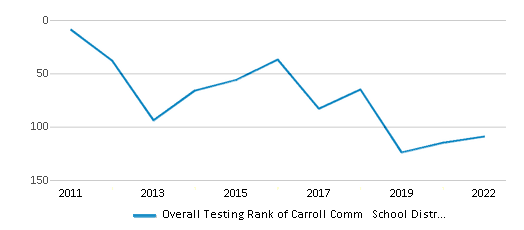
Math Test Scores (% Proficient)
71%
64%
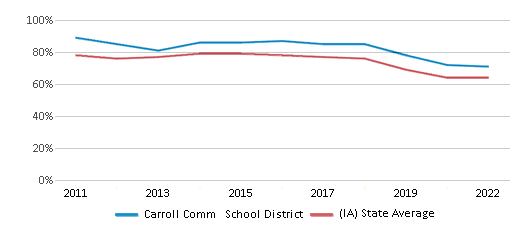
Reading/Language Arts Test Scores (% Proficient)
75%
70%
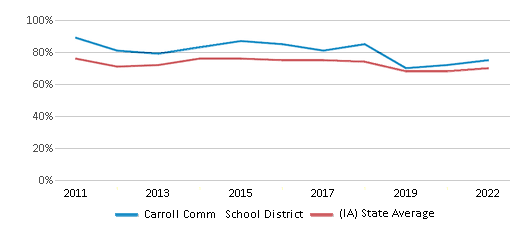
Science Test Scores (% Proficient)
64%
63%
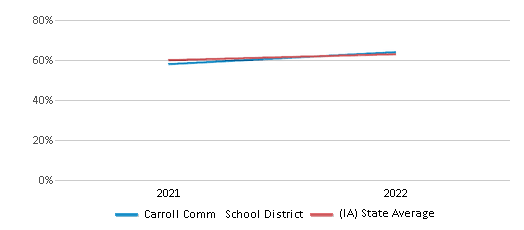
Graduation Rate
90-94%
90%

Students by Ethnicity:
Diversity Score
0.33
0.45
# American Indian Students
2 Students
532 Students
% American Indian Students
n/a
n/a
# Asian Students
12 Students
2,925 Students
% Asian Students
1%
2%
# Hispanic Students
160 Students
18,818 Students
% Hispanic Students
10%
13%
# Black Students
72 Students
9,688 Students
% Black Students
4%
6%
# White Students
1,360 Students
111,231 Students
% White Students
81%
73%
# Hawaiian Students
n/a
1,189 Students
% Hawaiian Students
n/a
1%
# Two or more races Students
66 Students
7,501 Students
% of Two or more races Students
4%
5%
Students by Grade:
# Students in PK Grade:
84
23,036
# Students in K Grade:
125
25,738
# Students in 1st Grade:
121
22,613
# Students in 2nd Grade:
102
21,812
# Students in 3rd Grade:
129
20,001
# Students in 4th Grade:
110
18,600
# Students in 5th Grade:
108
14,277
# Students in 6th Grade:
115
5,389
# Students in 7th Grade:
128
67
# Students in 8th Grade:
105
108
# Students in 9th Grade:
129
31
# Students in 10th Grade:
139
54
# Students in 11th Grade:
127
71
# Students in 12th Grade:
150
97
# Ungraded Students:
-
-
District Revenue and Spending
The revenue/student of $15,704 in this school district is less than the state median of $16,468. The school district revenue/student has grown by 6% over four school years.
The school district's spending/student of $13,801 is less than the state median of $16,042. The school district spending/student has grown by 6% over four school years.
Total Revenue
$26 MM
$8,262 MM
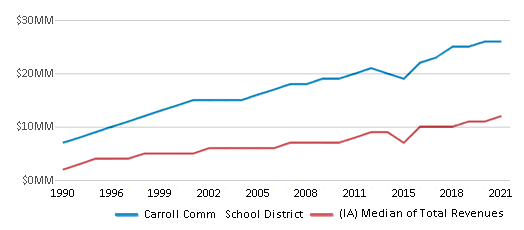
Spending
$23 MM
$8,048 MM
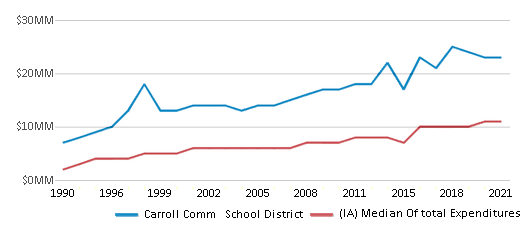
Revenue / Student
$15,704
$16,468
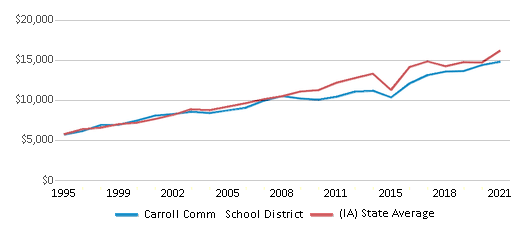
Spending / Student
$13,801
$16,042
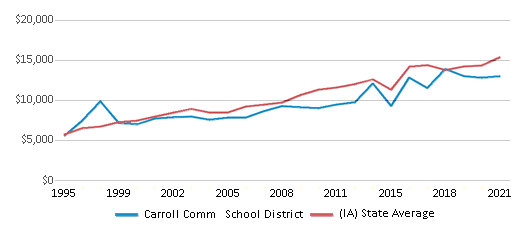
Best Carroll Comm School District Public Preschools (2025)
School
(Math and Reading Proficiency)
(Math and Reading Proficiency)
Location
Grades
Students
Rank: #11.
Fairview Elementary School
(Math: 85-89% | Reading: 85-89% )
Rank:
Rank:
9/
Top 20%10
525 East 18th Street
Carroll, IA 51401
(712) 792-8030
Carroll, IA 51401
(712) 792-8030
Grades: PK-2
| 432 students
Recent Articles

Year-Round Or Traditional Schedule?
Which is more appropriate for your child? A year-round attendance schedule or traditional schedule? We look at the pros and cons.

Why You Should Encourage Your Child to Join a Sports Team
Participating in team sports has a great many benefits for children, there is no doubt. In this article you will learn what those benefits are.

White Students are Now the Minority in U.S. Public Schools
Increasing birth rates among immigrant families from Asia and Central and South America, combined with lower birth rates among white families, means that for the first time in history, public school students in the United States are majority-minority. This shift in demographics poses difficulties for schools as they work to accommodate children of varying language abilities and socio-economic backgrounds.





